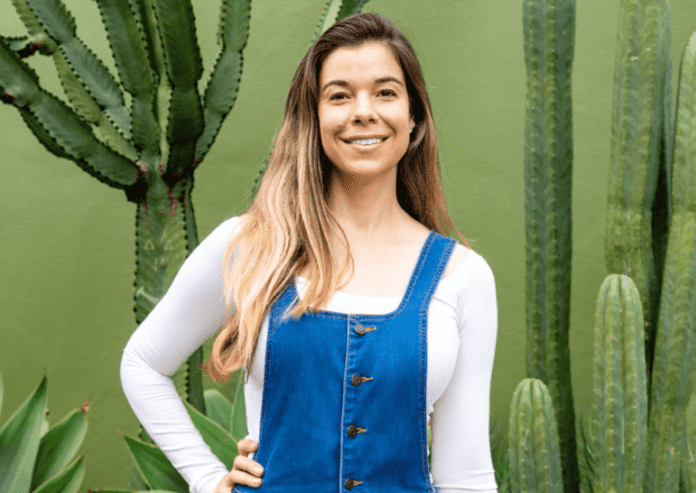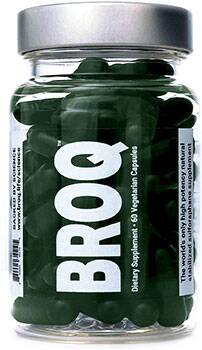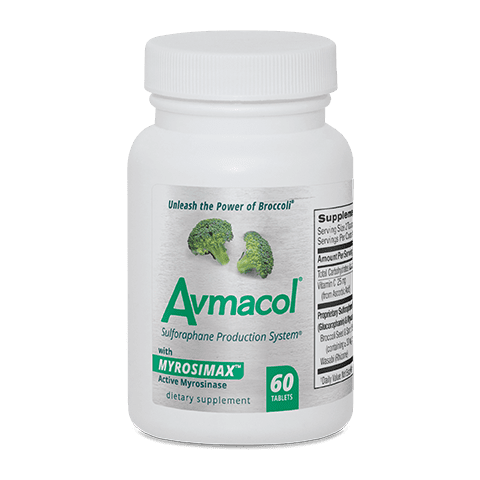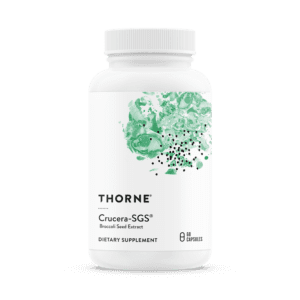Dr. Patrick’s graduate study focused on the relationship between mitochondrial metabolism, apoptosis, and cancer. Her breakthrough research revealed that a protein required for cell survival had two different mitochondrial localizations with distinct functions, tying its anti-apoptotic activity to a previously unknown involvement in mitochondrial respiration and structure preservation.
Dr. Patrick has previously worked at the Salk Institute for Biological Sciences on aging studies. She aims to disrupt the current quo and inspire the general population to think about wellness and our lifespan in a proactive, preventive manner.
She is no stranger when it comes to believing natural options can be better at curing cancer than the typical checmicals or prescriptions. She loves veggitables and has found that even doctors during the roman era agreed that certain veggies can be of great benefit.
Currently, her love and notability are based on her research into sulforaphane.
What is Sulforaphane?
Plants have compounds that they employ to defend themselves. These compounds are called phytochemicals. Furthermore, plants developed these compounds to be harmful to smaller creatures. Even tiny organisms are meant to be affected, like pathogens.
When it comes to phytochemicals, what is harmful to a virus or small animal has a negligible impact on a human. When consumed in modest doses, many of these phytochemicals have beneficial benefits for humans. However, if consumed in large quantities, they become poisonous. This is known as the hormetic effect. Basically, there is a “sweet spot” where consuming just enough of something is beneficial but that benefit decreases as you consume more until you are in harm.
Sulforaphane is the result of a chemical interaction between glucoraphanin and myrocinase. Now, glucoraphanin is a phytonutrient derived from plants that has a favorable hormetic effect.
Sulforaphane stimulates what is known as the NRF2 pathway, which promotes positive cell functions:
- Redox equilibrium and cell detoxification.
- Protection against oxidative stress through redox regulation.
- immune-modulating properties and anti-inflammatory effects.
- Protection from oestrogen quinone metabolites. This process maintains the stability of the p53 protein. P53 is known to suppress tumors.
- Removal of heavy metals from cells.
- Adipogenes regulation and skeletal metabolism.
This is only the tip of the iceberg; NRF2 has a far broader impact. A lot of the technical details have been omitted; however, all of the basic information comes from an excellent study written by Christine Houghton.
As a consequence, sulforaphane continues to be studied for its possible role in immortality, cancer prevention, and so more. Rhonda has recently been inspired by research that discovered that sulforaphane from broccoli sprouts improved the body’s immunological response against the influenza virus1. It specifically enhanced the synthesis of an enzyme by natural killer cells (a type of white blood cell), which may improve antiviral defensive responses.
Rhonda’s very comprehensive video about Sulforaphane may help you learn more about all this.
While growing your sulforaphane from sprouts is a cheaper option, sulforaphane pills are a more practical but expensive road to go down. However, growing sprouts requires time and preparation, and it isn’t always feasible while traveling or employed. For example, Rhonda’s time is more restricted now that she has a toddler, so she is taking sulforaphane supplements. Therefore, the finest sulforaphane supplements on the market are discussed here in this article a little bit lower.
RELATED READING: Dr. Rhonda Patrick’s Supplement Stack
How Rhonda Patrick Grows Broccoli Sprouts
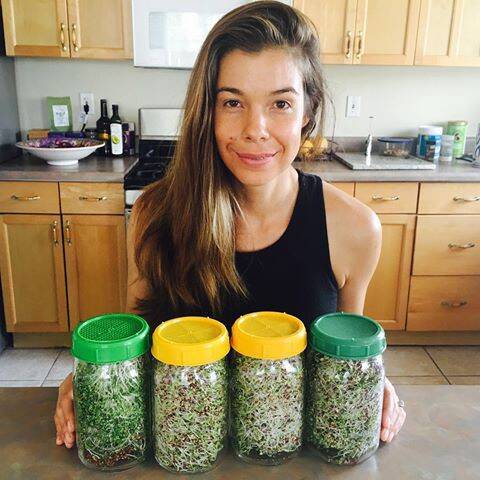
Rhonda prefers to obtain her sulforaphane from home-grown broccoli sprouts. Sprouts are simple to cultivate with a little effort. You’ll need the following items to replicate Rhonda’s identical broccoli sprout blooming setup:
- Ball Mason jars, preferably quart size with a wide opening (Amazon Link)
- Sprouter lids with a wide opening to suit Ball jars (Amazon Link)
- Organic broccoli seeds (Amazon Link)
Keep in mind that many have said that a lot of broccoli seed dealers are offering “Raab” seeds — promoted as normal broccoli seeds. Despite appearing somewhat similar when fully matured, they belong to a distinct family of brassicas than ordinary broccoli. It is not known yet if these seeds include sulforaphane once grown. until further study is done, try to avoid them when purchasing seeds.
Rhonda’s Instagram shows the size of the mason jars she utilizes, and she has videos on how she used to go about warming sprouts. She was previously freezing them in zip locks as soon as the sprouts in the jar were ready. However, she has lately ceased freezing them. She instead chooses to store them in the fridge after harvest. This is because she has experienced stomach discomfort while consuming cold sprouts as opposed to fresher sprouts.
Rhonda harvests every three days, which indicates that the sprouts have more glucoraphanin while they are young. Below is a great video where Dr. Patrick discusses her process in depth.
RELATED READING: Dr. Rhonda Patrick’s Diet: The Complete Guide
Sulforaphane Dosage
According to Rhonda, the greatest evidence regarding dose comes from clinical studies. If you wish to replicate their findings, strive for 40mg up to 60mg of sulforaphane. This is around 100 grams to 140 grams in fresh sprouts.
This is based on the assumption that 1g of fresh sprouts equals 0.425mg of sulforaphane.
To put this in context, Rhonda’s mason jars produce about 280 grams of fresh weight per jar when filled, bringing 1 jar around 120mg in sulforaphane concentration.
Rhonda claims to eat up to 4 ounces of broccoli sprouts many times each week. In terms of consumption, you should definitely follow Rhonda’s lead and add the sprouts to smoothies and mix them in a Blendtec – to disguise the taste. Juicing should be avoided since it removes the prebiotic fiber.
All About Bioavailability
Bioavailability is a subset of absorption that refers to the proportion of a medication that enters the systemic circulation after it has been given. So when a drug is given intravenously, its bioavailability is one hundred percent. However, when a drug is given via a method other than intravenous, its bioavailability is usually lower than when it is administered through an intravenous route, owing to digestion and first-pass metabolism, among other factors.
When it comes to nutritional supplements, phytochemicals, and other vitamins that are administered via the mouth, bioavailability is often defined as the amount or percentage of the ingested dosage that is absorbed inside the body.
Rhonda had originally made a video on increasing the bioavailability of sulforaphane in sprouts by warming them. However, after debating the procedure with accredited Jed Fahey, she has now halted the task. By not warming the sprouts, that eliminates the danger of overheating the sprouts and, as a result, inhibiting the myrocinase enzyme – which would be undesirable.
RELATED READING: Dr. David Sinclair’s Longevity Supplement Stack
Sulforaphane Supplements
Vitamins, omega-3 fats, herbs, minerals such as calcium, and other herbal products are examples of dietary supplements. And if you do decide to take one, you are not alone in your decision. Approximately half of all adults in the United States do so. Dietary supplements are available in several different forms, including pills, capsules, candies, and shakes, as well as beverages and energy bars, among others. Vitamins D and B12 are among the most popular nutritional supplements.
One of the top experts in sulforaphane/NRF2 study, Jed Fahey, cautions us to be careful about the supplements we take in a discussion with Rhonda Patrick on her podcast. His lab, which has tested numerous supplements over the decades, has discovered that many of them are bad and don’t contain what they claim to. Most healthy people who eat a nutrient-rich diet don’t need many supplements unless there is a deficiency they can’t help.
There three primary methods to ingest sulforaphane:
- Pure Sulforaphane
- Glucoraphanin + Myrosinase
- Glucoraphanin only
The following sulforaphane supplements were evaluated and utilized in clinical trials by Jed Fahey’s team:
Prostaphane
Nutrinov, a French company, presently produces Prostaphane, one of the most prestigious sulforaphane supplements currently on the market. However, Prostaphane is only accessible in France. Unlike other sulforaphane supplements, it only includes sulforaphane rather than glucosinolate.
It is marketed to assist with prostate aging, but since the supplement is pure sulforaphane, it has numerous additional advantages. Because it is exclusively available in France, Rhonda was importing it into the United States via an international business. However, currently, the website and maybe even the business are offline. This could change in the future and if so, we will provide a link for you to check out. Fortunately, there seems to be a new American option. In comes BROQ.
Superhuman Health has partnered with the French producers of Prostaphane to provide a nearly similar medication named BROQ for the United States. Currently, they are in cooperation with the firm behind Prostaphane. BROQ includes dosages of sulforpahane per pill just like Prostaphane.
During a recent Q&A, Ronda was questioned about BROQ, and she said that although in principle it should be the identical supplement, she will continue to use her stock of Prostaphane until she receives confirmation from a scientific acquaintance that it is the same.
Avmacol
Prior to the launch of BROQ, the greatest competitor to Prostaphane was Avmacol by Nutramax Laboratories. It includes glucoraphanin (sulforaphane glucosinolate) derived from broccoli seeds, as well as the enzyme myrocinase.
They now produce it in two strengths: normal strength with 15 mg of sulforaphane glucinosalate per pill and enhanced strength with 30mg per 1 capsule.
It’s at a bioavailability of 35%, which equates to around 5.25mg of sulforaphane per normal strength pill or 10.5mg each extra strength pill.
Crucera-SGS
Thorne’s Crucera-SGS is the most recent sulforaphane supplement that Jed Fahey and his colleagues have put through its paces. Glucoraphanin (sulforaphane glucosinolate, or SGS) is included in this supplement, however, it does not contain the extra myrocinase enzyme. Strangely enough, our intestines actually contain bacteria that turn glucoraphanin into sulforaphane, which is beneficial for human health.
It is difficult to predict how much each individual needs, and it is not as beneficial as eating more active myrocinase.
Unlike many other broccoli sprout supplements that are useless, the three supplements listed above have been evaluated and utilized in clinical studies, so we can be certain that they include what they claim.
- Prostaphane/BROQ is the supplement with the highest bioavailability.
- Avmacol is the supplement with the second-highest bioavailability.
Using supplements rather than farmed sprouts has the advantage of reducing the danger of infection – such as with pregnant women or those with weak immune systems.
If sprouts are not kept fully sterile, they face the danger of bacterial contamination, while sprouts that are made into capsules do not run the risk of bacterial growth.
Rhonda’s Recommendation is to take two pills of Prostaphane per day.
Moringa Powder
Rhonda began taking Moringa in 2020, after the more recent findings of Jed Fahey as discussed in her podcast episode with him. Originally plucked from the Drumstick Tree, moringa is made from the leaves, which are then collected, dried, and ground into a fine powder. Moringin, an isothiocynate with characteristics comparable to sulforaphane, is found in the plant’s leaves.
Subjects in Jed’s Moringa research drank it as a cold-brewed tea, according to the results.
This may be prepared by combining moringa leaves with room temperature water and allowing it to sit for at least ten min before drinking. They recommend a powder-to-water ratio of 1:100
Making hot tea is discouraged because the myrocinase enzyme found in moringa is sensitive to temperature, and it is essential to maintain its stability. Jed’s research found that Kuli Kuli Moringa was the most effective.
Several phytochemicals and vitamins of importance in the leaves are quickly degraded by intense sunshine or heat after harvest, according to their FAQs, therefore it is important to exercise care while sourcing. In contrast to a large amount of money, time, and effort that has been invested in researching sulforaphane and broccoli sprouts, research on Moringa is still very much in its adolescence.
No human studies have been done to establish what dosage of moringa should be used to get the desired effects of the plant’s different properties. However, Jed recommends that you take at least a tsp of moringa powder every day as part of your regular regimen.
More research may be required to demonstrate any kind of equivalence between Moringa and sulforaphane dosage.
RELATED READING: Dr. Andrew Huberman’s Fish Oil Protocol
Final Thoughts
Sulforaphane is a fantastic antioxidant. It is a potent activator of the NRF2 pathway, which is essential because it regulates the expression of over 200 genes, including antioxidant and anti-inflammatory genes, as well as genes that remove toxic chemicals from the body.
Sulforaphane also has excellent cancer-prevention properties and may be used to relieve the symptoms of some illnesses. As a result, sulforaphane has the potential to lower cancer risk and potentially destroy cancer cells. This is achievable because sulforaphane has been proven to reduce DNA adducts, a form of DNA damage that has been linked to the development of cancer. NRF2 aids in the prevention of cancer by deactivating carcinogens and boosting their excretion, as well as by activating anti-oxidant genes and genes implicated in inflammation.
Additionally, the antioxidant sulforaphane has been shown to enhance the expression of a gene known as NQ01 in breast tissue. NQ01 is engaged in a number of critical activities related with detoxification, and it also plays a role in the prevention of the degradation of the tumor suppressor protein p53, which is essential for tumor suppression. P53 is a very essential gene to be aware of since it is found in over 50% of adult cancer patients who have a mutant or damaged P53 gene. As a result, it is critical that our P53 gene continues to function properly.
Furthermore, Sulforaphane has been shown to lower the risk of developing cancer, cardiovascular disease, and even neurological disorders in certain studies. The idea that sulforaphane might be the secret to immortality, or at the absolute least that it could be used to delay the aging process, is also being considered by some researchers.

